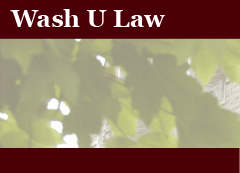Article Title
Informal EPA Action Under CERCLA: Problems of Judicial Review
Publication Title
Washington University Journal of Urban and Contemporary Law
Abstract
Courts have played an important role in shaping the parameters of the Comprehensive Environmental Response, Compensation, and Liability Act of 1980 (CERCLA). Despite the judiciary's significant role, the first meaningful review of informal Environmental Protection Agency (EPA) decisionmaking concerning hazardous substance cleanup activity may occur only when the EPA brings suit against a potentially responsible party. Whether the suit is to enjoin the party to clean up a release or to seek reimbursement for government cleanup costs, the EPA will have already made a series of informal decisions that in many instances are both important and irreversible. This Recent Development addresses the issues involved with judicial review of informal EPA cleanup actions under CERCLA. Specifically, the article addresses who can challenge EPA action or inaction, when a challenger is permitted to seek judicial review, and what type of relief is available. Though the courts have generally provided consistent answers to these questions, controversy exists over CERCLA's ability to withstand constitutional due process challenges.
Before any cleanup activities occur the EPA must identify potentially hazardous waste sites. As required by section 105 of CERCLA, the agency identifies and investigates potential sites in accordance with the National Contingency Plan (NCP). Section 105(8) also charges the EPA with establishing criteria for determining cleanup priorities among hazardous waste release sites and formulating a National Priorities List. In coordination with other federal agencies, state and local governments, and private entities, the EPA may conduct preliminary assessments of the site, ask other parties to begin investigations, and send out "notice" letters to potentially responsible parties. A potentially responsible party is anyone who may be liable in a cost recovery action under section 107(a).
In order to fully comprehend the scope of judicial review problems under CERCLA, one must consider the EPA's alternative cleanup actions under CERCLA. When the EPA decides that cleanup action is needed, three basic options are available. First, the EPA can file suit to obtain a court order forcing a responsible party to take necessary action. Second, the EPA can issue an administrative order requiring responsible parties to take appropriate action. Finally, the EPA can expend money from the Hazardous Substance Response Fund (Superfund) to clean up the site. Following any cleanup action by the EPA, any responsible party may be liable for the cleanup costs under section 107.
Recommended Citation
Peter D. Van Cleve,
Informal EPA Action Under CERCLA: Problems of Judicial Review,
31 Wash. U. J. Urb. & Contemp. L. 317
(1987)
Available at: https://openscholarship.wustl.edu/law_urbanlaw/vol31/iss1/15
